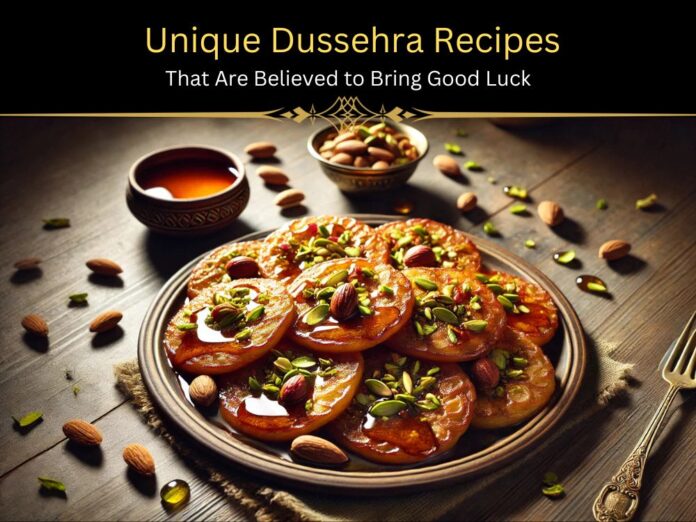Dussehra, the festival that marks the triumph of good over evil, is celebrated with great fervour across India. Along with rituals and prayers, food plays a crucial role in this celebration, with each region having its own unique offerings that are believed to bring prosperity, health, and good fortune.
From Dal Paratha and Kheer in Uttar Pradesh to the beloved Motichoor Laddoo offered to Lord Hanuman, these traditional dishes are thought to be auspicious and add a touch of sweetness to the festivities. Here’s a look at some of the special Dussehra recipes that are cherished across India and the stories behind them.
Unique Dussehra Recipes:
Dal Paratha and Kheer (Uttar Pradesh):
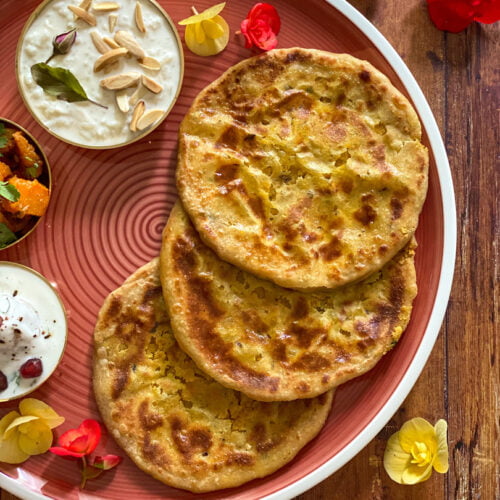
In Uttar Pradesh, no Dussehra celebration is complete without Dal Paratha served with rice kheer. This combination, made from cooked chana dal and carom seeds, is offered to the deity during the morning prayer. Eating this combination is believed to bring health and prosperity to the family, making it a must-have on this auspicious day.
Motichoor Laddoo (Across India):

A favourite of Lord Hanuman, Motichoor Laddoo is a staple offering during Dussehra. It is believed that consuming these laddoos, made with desi ghee, brings happiness and sweetness into life. The ritual is followed across India, making this delightful treat a popular choice for those seeking divine blessings.
Sweet Dosa (Karnataka):
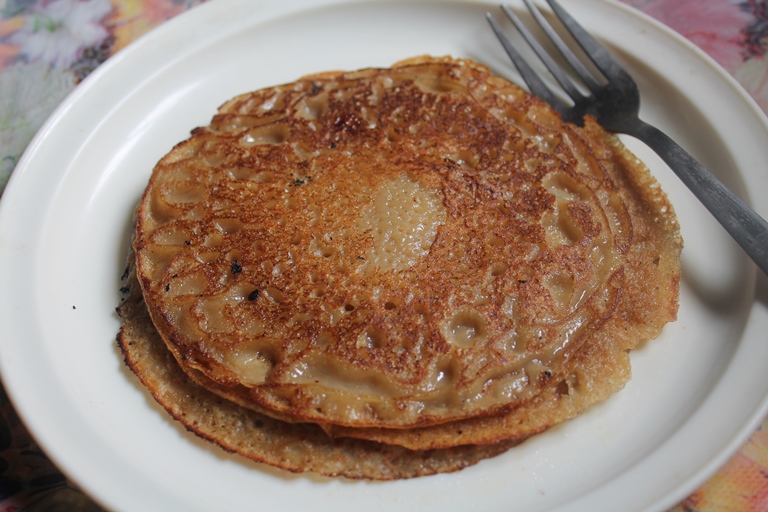
A specialty in Karnataka, Sweet Dosa is made with jaggery, coconut, rice flour, and wheat flour. This dish is not only a treat for the taste buds but is also considered auspicious. It is often offered as prasad during the Dussehra celebrations, symbolizing the sweetness and richness of life.
Paan (Uttar Pradesh & Bihar):
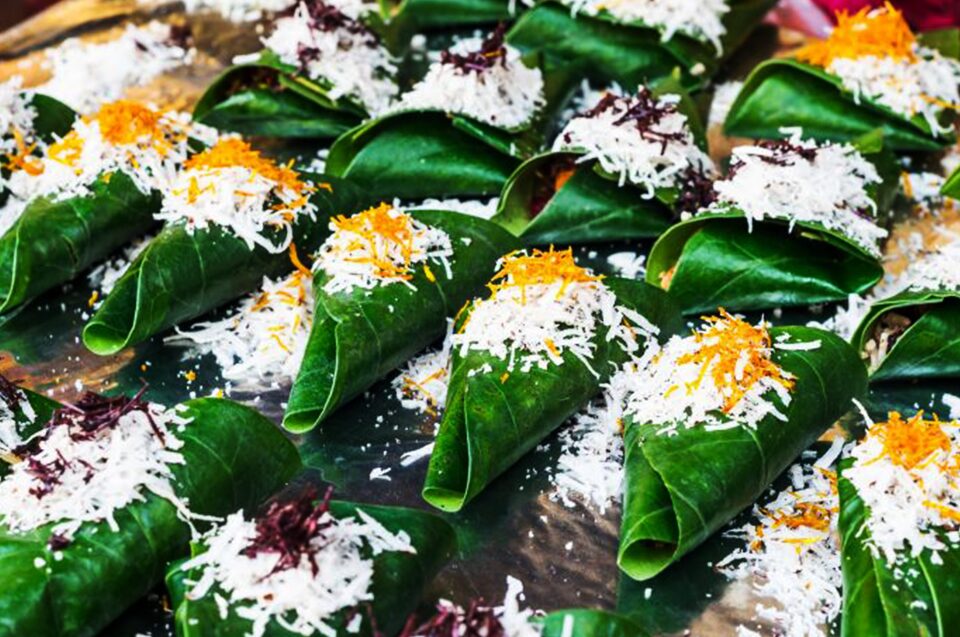
Paan, or betel leaf, holds a special place in Dussehra traditions in Uttar Pradesh and Bihar. It is believed that offering betel leaf to Lord Hanuman is a sign of respect and love, celebrating the victory of good over evil. Eating paan on Dussehra is thought to bring good fortune and positivity.
Dahi (Orissa):
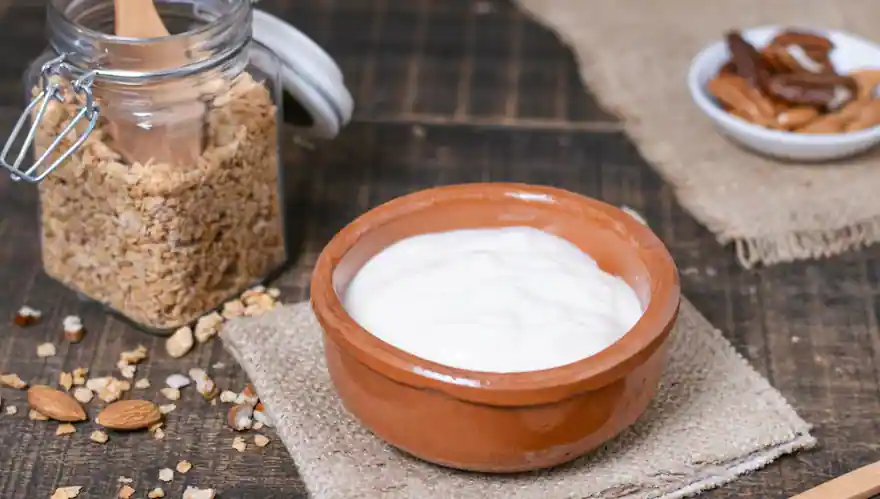
Dahi-cheeni (curd with sugar) is traditionally consumed before embarking on new ventures, and this practice extends to Dussehra. In Orissa, women offer curd along with cooked rice soaked in water to Goddess Durga before participating in the ritual of Ravana Dehan (the burning of effigies).
Rasgulla (West Bengal):
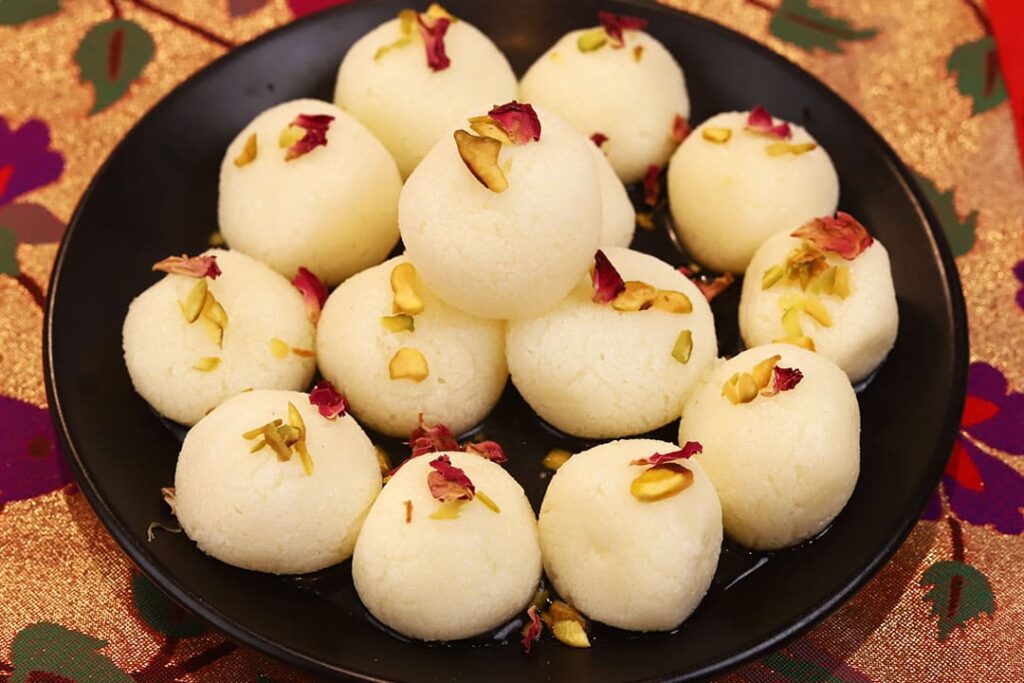
In West Bengal, Rasgulla is a beloved treat during the Dussehra and Vijayadashami celebrations. Made from milk, chenna, and sugar, these soft, syrupy sweets symbolize the sweetness of victory and are offered as a special prasad during the festival. Alongside, kucho nimki, a crispy fried snack, is also popular during this time.
Jalebi and Fafda (Gujarat):
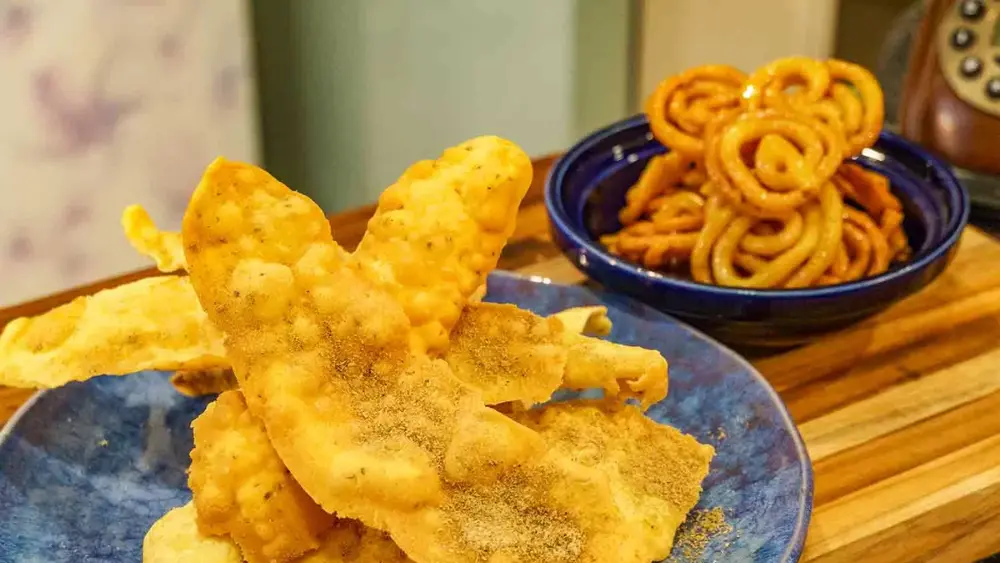
A classic combination from Gujarat, Jalebi and Fafda are enjoyed on Dussehra to honor Lord Rama’s love for sweet treats like Shashkuli, now known as Jalebi. Paired with fafda, made from gram flour, this dish is thought to end the period of fasting with a burst of sweetness and bring prosperity to the household.
Closing Paragraph:
As families come together to celebrate Dussehra, these traditional dishes not only add flavor to the festivities but also carry deep cultural significance. From the sweet notes of Rasgulla in West Bengal to the savory richness of Dal Paratha and Kheer in Uttar Pradesh, these recipes reflect the diverse culinary heritage of India. Beyond their taste, they embody the spirit of Dussehra—spreading joy, prosperity, and the belief in the ultimate victory of good over evil. Embracing these customs adds a special charm to the celebration, making Dussehra a time for both reflection and indulgence.



